 Petzlover
Petzlover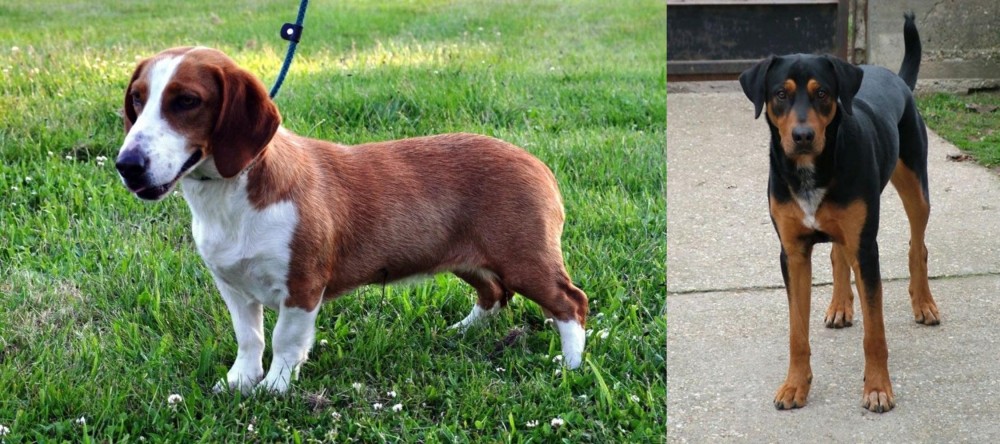 Drever is originated from Sweden but Hungarian Hound is originated from Hungary. Drever may grow 27 cm / 10 inches shorter than Hungarian Hound. Drever may weigh 11 kg / 24 pounds lesser than Hungarian Hound. Drever may live 3 years more than Hungarian Hound. Both Drever and Hungarian Hound has almost same litter size. Both Drever and Hungarian Hound requires Low Maintenance.
Drever is originated from Sweden but Hungarian Hound is originated from Hungary. Drever may grow 27 cm / 10 inches shorter than Hungarian Hound. Drever may weigh 11 kg / 24 pounds lesser than Hungarian Hound. Drever may live 3 years more than Hungarian Hound. Both Drever and Hungarian Hound has almost same litter size. Both Drever and Hungarian Hound requires Low Maintenance.
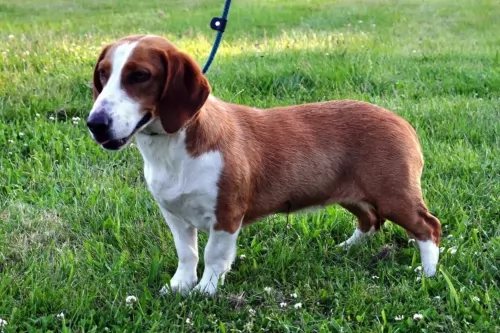 The Drever dog hails from Sweden, being brought from Germany to the Scandinavian country in 1910. As a scenthound, in spite of his short legs, he was once used for hunting purposes, having a keen nose.
The Drever dog hails from Sweden, being brought from Germany to the Scandinavian country in 1910. As a scenthound, in spite of his short legs, he was once used for hunting purposes, having a keen nose.
The dog was developed from the Westphalian Dachsbracke and then crossbred with other Swedish hounds.
By the 1940s there were two distinctive sizes of this Dachsbracke dog and the larger one was named Drever. It was in 1947 that the Drever was then recognized by the Swedish Kennel Club as a separate breed. It was also recognized by a number of other clubs and registries.
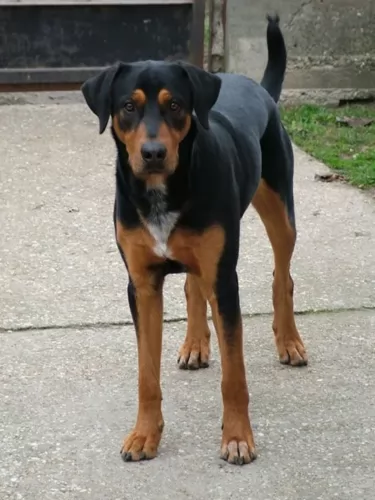 The Hungarian Hound, also known as the Transylvanian Hound, originated in ancient Hungary as a hunting dog. At the time there were Asian Hounds that traveled with Hungarian Magyar tribes into Transylvania. As early as the 9th century it is believed that these Hungarian dogs were crossed with Celtic Hounds and local dogs. The result is the Hungarian Hound. These dogs were incredibly popular throughout Transylvania.
The Hungarian Hound, also known as the Transylvanian Hound, originated in ancient Hungary as a hunting dog. At the time there were Asian Hounds that traveled with Hungarian Magyar tribes into Transylvania. As early as the 9th century it is believed that these Hungarian dogs were crossed with Celtic Hounds and local dogs. The result is the Hungarian Hound. These dogs were incredibly popular throughout Transylvania.
This scent hound almost became extinct but was saved by intense breeding during the latter part of the 21st century. They developed two kinds, short and tall, for different types of hunting. The tall dogs hunted boar, bison, lynx and bear. The short dogs hunted hare, fox and chamois.
Only the tall dogs exist today. Some Hungarians raided parts of Europe and took the dogs with them. There was then a crossing breeding with Polish dogs. The tall dogs exist today in Hungary and Romania. The Hungarian Kennel Club recognized the breed and the United Kennel Club (UKC) from the United States recognizes them. No major clubs such as the AKC (American Kennel Club) or the British Clubs. The breed was accepted into the AKC Foundation Stock Service Program
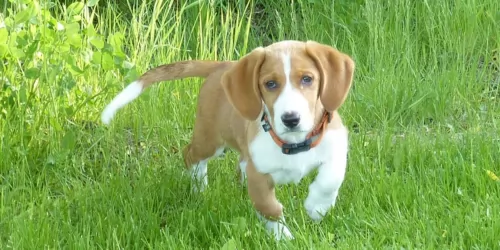 Looking quite similar to the Beagle, the Drever is a medium sized dog which stands at about 32 – 38cm and weighing between 14 and 16kg.
Looking quite similar to the Beagle, the Drever is a medium sized dog which stands at about 32 – 38cm and weighing between 14 and 16kg.
He has a fairly long body but unlike the Dachshund his short legs are straight and aren’t bent. The nose of the dog is fairly large and black and the ears are quite long, much like a Beagle dog.
The eyes are bright, alert and dark and the expression on the dog’s face is amicable and gentle.
He has a short, dense coat and is looked upon as a moderate to heavy shedder. The coat can be in several colors such as brown or tan and black with white markings over the face, neck, chest and feet. He has floppy ears and a long tail carried downwards.
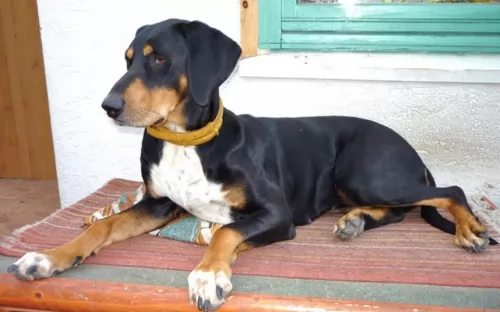 The Hungarian Hound is a medium sized dog, a scent hound with the same characteristics of the type of hunting hounds found in Mid-Europe. The breed is a hardy one with a long head slightly domed skull. The muzzle is short, and the jaws are strong. The lips are black, and the ears are round and hang. Their eyes are shaped like almonds and dark brown. The breed has large paws with cushioned pads and strong toes.
The Hungarian Hound is a medium sized dog, a scent hound with the same characteristics of the type of hunting hounds found in Mid-Europe. The breed is a hardy one with a long head slightly domed skull. The muzzle is short, and the jaws are strong. The lips are black, and the ears are round and hang. Their eyes are shaped like almonds and dark brown. The breed has large paws with cushioned pads and strong toes.
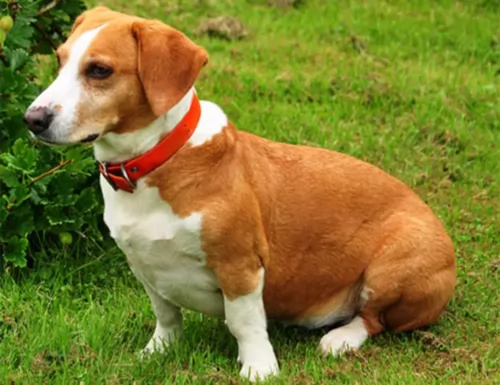 The Drever dog is an easy dog to have around, not requiring any special treatment to keep him happy.
The Drever dog is an easy dog to have around, not requiring any special treatment to keep him happy.
He gets on well with every member of the family as well as any pets in the home and fits easily into city- or country life.
He is an active dog however, and will require exercising to avoid him becoming frustrated.
Treat your amicable Drever with the attention he deserves and you’ll have a friendly, calm and devoted pet who wants to be your best friend.
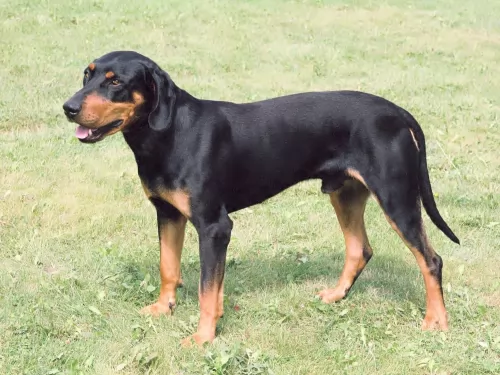 Children friendliness – This breed is very friendly with children.
Children friendliness – This breed is very friendly with children.
Special talents - Hunting independently and at a distance from the hunter.
Adaptability – Not an apartment dog. They need space and land.
Learning ability – They are very independent and intelligent.
 The Drever is a dog which enjoys good health generally, and with good care he can reach 12 to 15 years of age. The Drever, similar to other dogs, may be susceptible to some common health concerns that any healthy dog can experience such as back pain, hip dysplasia, eye diseases, obesity, diabetes and others.
The Drever is a dog which enjoys good health generally, and with good care he can reach 12 to 15 years of age. The Drever, similar to other dogs, may be susceptible to some common health concerns that any healthy dog can experience such as back pain, hip dysplasia, eye diseases, obesity, diabetes and others.
Veterinary care is an important part of a dog’s health – from puppyhood to the senior years. However, the frequency of visits you make to your vet with your adult dog will depend on his health.
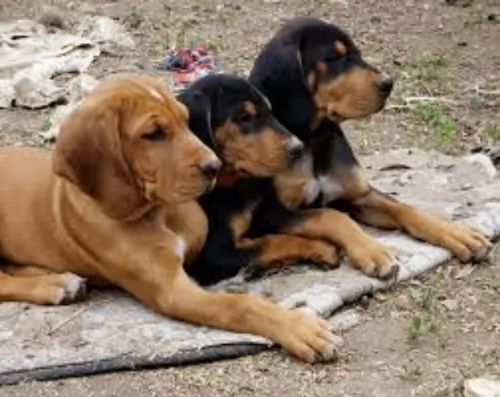 Even though this is an ancient breed they do face certain medical issues such as:
Even though this is an ancient breed they do face certain medical issues such as:
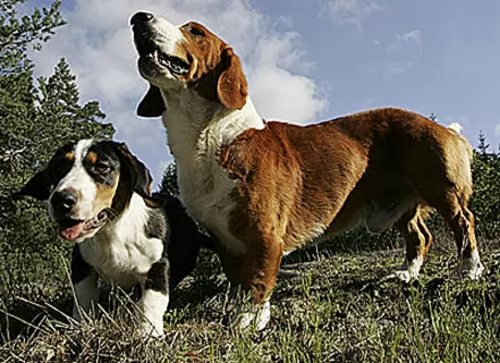 It is important to feed your dog food that will cater to his digestion. That is why some of the best commercially manufactured foods are so good – they cater specifically for a dog’s age, his size, his activity levels and for any illnesses he may have.
It is important to feed your dog food that will cater to his digestion. That is why some of the best commercially manufactured foods are so good – they cater specifically for a dog’s age, his size, his activity levels and for any illnesses he may have.
In terms of activity levels, the Drever is an active dog, quite capable of chasing prey for long distances without tiring. This is why some dog foods are breed- and activity specific.
A good brand of kibble mixed with some cooked brown rice, vegetables and chicken will be excellent for your pet. Remember, if at all possible, to include some raw meat into the diet from time to time. Cool, fresh water should be available at all times.
Maintaining your Drever’s short, coarse coat won’t be a hassle, and you can call him a low maintenance dog. All that is essentially required is for you to give his coat a good brush twice a week. Nails will also need to be checked as well as his ears. Ignoring his ears can lead to wax build up and dirt and this can result in infection.
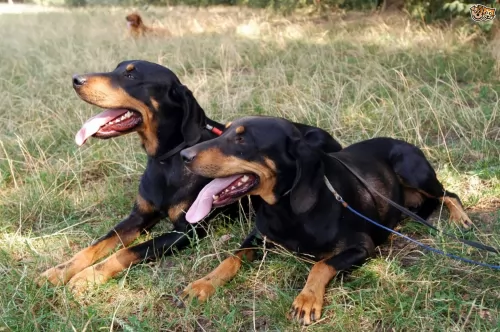 Feeding the puppy – 1-3 cups of high quality food served in 3-5 meals per day.
Feeding the puppy – 1-3 cups of high quality food served in 3-5 meals per day.
Feeding the adult – 3-5 cups of high quality food served in 2-3 meals a day.
Points for Good Health – generally healthy
Games and Exercises – The Hungarian Hound is a hunting dog and therefore accustomed to and bred for a high level of exercise. Their instinct for hunting is really strong so make sure you do not let them off leash outside of a contained area. They excel at tracking, field trials, lure chasing, and fly ball.